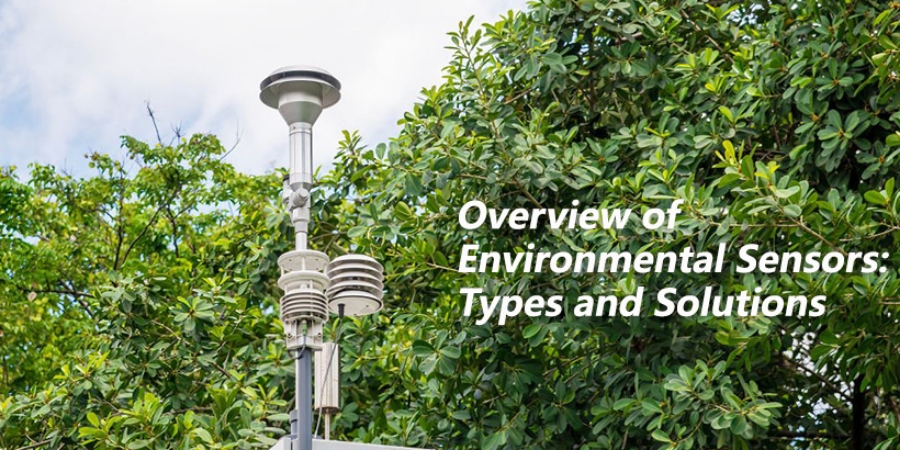
Environmental sensors are devices used to monitor and measure various physical, chemical or biological parameters in the environment. They can capture data such as air quality, temperature, humidity, gas concentration, noise level, light intensity, etc. in real time, providing support for environmental protection, smart city construction, agricultural monitoring, indoor air quality management and other fields. In this article, Such sensor shop will comprehensively introduce common sensor types, typical application scenarios, and recommended products and solutions in the environmental field to help engineers and developers be more directional in project planning and selection.
Why does environmental monitoring require multiple sensors?
The environment is a highly dynamic and complex system. To accurately perceive and manage it, we need real-time data in multiple dimensions. The following are common monitoring dimensions and sensor types in environmental monitoring:
- Air quality: Understand the degree of air pollution by detecting PM2.5, PM10, VOC, CO₂, NO₂, etc.
- Temperature and humidity: Determine climate change, building comfort and agricultural suitability
- Soil and moisture: Used for precision agriculture and vegetation management
- Rainfall and lightning: Monitor key meteorological events to help prevent and reduce disasters
- Noise level: Used for urban environmental comfort assessment and policy formulation
These sensors are usually used in combination to form a complete environmental perception system.
Main sensor types
Air Quality Sensor:
Air quality sensors are widely used in environmental monitoring systems to detect key air pollutants such as CO₂, TVOC, and particulate matter. These sensors typically feature digital outputs (I²C/UART), making them easy to integrate into air quality stations, indoor purifiers, and smart home devices. With high sensitivity and real-time data delivery, they play a vital role in smart city networks and public health applications.

Humidity Sensor:
Humidity sensors measure relative humidity in the air and are fundamental to climate control, meteorological monitoring, and agricultural systems. High-accuracy humidity sensors respond quickly to environmental changes and are designed to minimize interference, ensuring reliable performance across diverse settings such as greenhouses, warehouses, and HVAC systems.
Gas Sensor:
Gas sensors are essential in detecting and quantifying harmful gases like CO, NO₂, SO₂, and H₂S in the environment. They are commonly deployed in factory emission monitoring, tunnel ventilation, and gas leak detection systems. Supporting both analog and digital outputs, gas sensors offer flexibility for a wide range of industrial and safety-critical environmental scenarios.

Lightning Sensor:
Lightning sensors detect electromagnetic pulses generated by lightning strikes within a 40-kilometer range. These sensors are used in weather stations, power infrastructure, and outdoor construction sites to provide early warnings of thunderstorm activity. Advanced filtering mechanisms reduce false positives, ensuring accurate storm detection and improved safety management.
Moisture Sensor:
Soil moisture sensors are critical tools in agriculture and environmental research, providing real-time information about soil water content. Capacitive or resistive models are designed to perform reliably under various soil conditions. By enabling precise irrigation control, they help conserve water and support sustainable farming practices.
PM Sensor/Dust Sensor:
Particulate matter (PM) sensors detect PM1.0, PM2.5, and PM10 using laser scattering technology. With built-in fans for stable air intake, these sensors are highly effective in indoor/outdoor air monitoring, smart city applications, and pollution source detection, providing accurate data for air quality assessment and environmental health.

Rain Sensor/Rainfall Sensor:
Rainfall sensors, typically in a tipping-bucket design, measure precipitation accurately over time. They are widely used in weather forecasting, urban drainage systems, and precision agriculture. With robust construction and standardized output (e.g., RS485), they ensure consistent and long-term operation even in harsh outdoor environments.
Soil Sensor:
Soil sensors often combine multiple measurements such as pH, moisture, and temperature in one unit. These all-in-one sensors are ideal for smart farming, greenhouses, and soil research, offering accurate insights into soil conditions. Their corrosion-resistant probes and real-time data output help optimize fertilization and irrigation strategies.
Sound Sensor/Noise Sensor:
Noise sensors measure environmental sound levels (dBA) and are commonly used in urban noise mapping, school zones, residential areas, and industrial parks. These sensors support long-term noise analysis and help authorities implement sound pollution control policies to improve the urban living experience.
Temperature Sensor:
Temperature sensors include a variety of types such as NTC and PT100 thermistors, suitable for monitoring in outdoor and industrial environments. Available in waterproof, encapsulated, or threaded designs, these sensors are deployed in meteorological stations, cold storage, and equipment temperature regulation systems.

Temperature and Humidity Sensor:
Combined temperature and humidity sensors provide dual environmental metrics in a compact form factor. With digital communication and high accuracy, they are widely used in HVAC systems, cold-chain logistics, and agricultural automation. Their reliable performance makes them a core component of modern IoT environmental sensing platforms.
Recommended sensors display
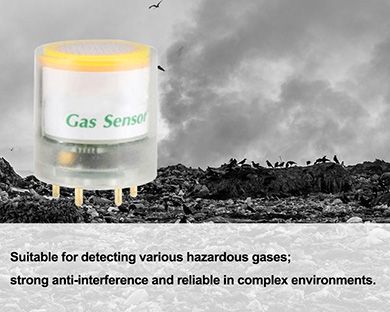 |
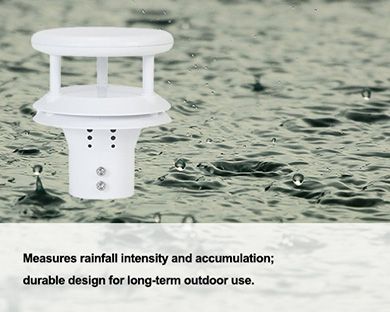 |
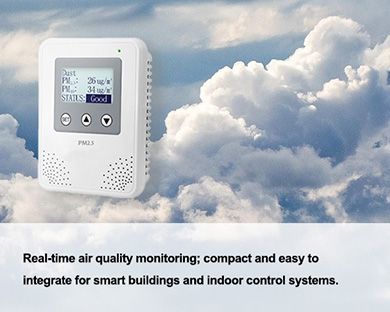 |
| Gas Sensor | Rain Sensor | Air Quality Sensor |
Recommended reasons
Gas sensors are widely used in environmental safety monitoring, capable of detecting harmful gases such as CO, NO₂, SO₂, H₂S, and CH₄ in real time. They are ideal for industrial emission monitoring, urban drainage safety, and toxic gas leak detection, enhancing safety for personnel and infrastructure.
Rainfall sensors are essential components in urban flood control, agricultural irrigation, and weather monitoring. They enable real-time measurement of rainfall intensity and accumulation, supporting warning systems, drainage scheduling, and water-saving strategies.
Air quality sensors detect common pollutants like CO₂ and TVOC in real time, making them essential in smart buildings, indoor air quality management, and urban environmental monitoring. They support HVAC control, fresh air optimization, and public data networks.
Typical industry application solutions
Urban air quality monitoring system
With the acceleration of global urbanization, air pollution has become a major challenge in urban management. Governments and environmental protection agencies widely deploy air quality monitoring stations to grasp the air pollution situation in different areas of the city in real time.
Recommended sensors:
- Air Quality Sensor (CO₂ / TVOC)
- PM Sensor (PM1.0 / PM2.5 / PM10)
- Gas Sensor (CO, NO₂, O₃)
- Temperature & Humidity Sensor
| Sensor | Function description |
| Air Quality Sensor | Detects CO₂ and TVOC for evaluating overall air quality |
| PM Sensor | Monitors concentrations of PM1.0, PM2.5, and PM10 particulate matter |
| Gas Sensor | Measures harmful gases such as CO, NO₂, and O₃ to identify pollution sources and support environmental control |
| Temperature & Humidity Sensor | Provides meteorological background data and supports air quality trend analysis and sensor compensation |
Solution suggestion: Deploy multi-point controlled sensor nodes, combine Lora/Wi-Fi communication and cloud data platform to form an "urban air heat map". It is recommended to use PM sensors with laser scattering method and all-in-one air modules for remote calibration and batch deployment.
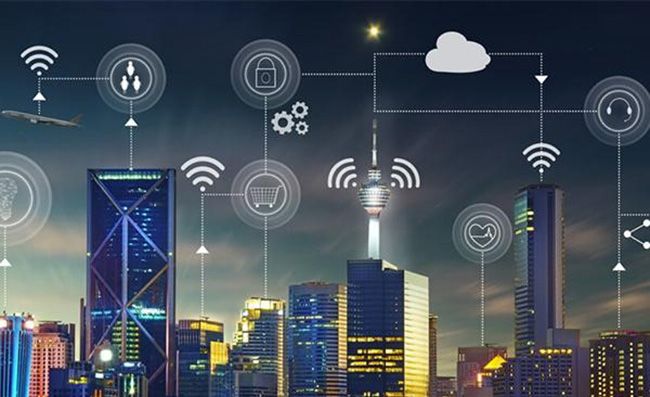
Smart agriculture and soil environment management
Modern agriculture relies on accurate environmental perception to improve yield and water and fertilizer efficiency. Monitoring soil status and microclimate changes is an important guarantee for efficient agriculture.
Recommended sensors:
- Soil Sensor (pH / Moisture / Temp)
- Moisture Sensor
- Rainfall Sensor
- Temperature Sensor
| Recommended Sensor | Function description |
| Soil Sensor | Combines pH, moisture, and temperature measurements to comprehensively reflect soil conditions |
| Moisture Sensor | Monitors real-time soil water content to optimize irrigation decisions |
| Rainfall Sensor | Records rainfall conditions to assist in irrigation planning and pest/disease prediction |
| Temperature Sensor | Indicates field climate conditions to support crop growth assessment and environmental management |
Solution suggestion: Combined with wireless transmission module, multiple groups of soil sensor nodes are set up in the field to obtain soil moisture and temperature data in real time, and realize precise irrigation and integrated water and fertilizer management. The sensor selection should pay attention to corrosion resistance and waterproof packaging capabilities, and support solar power supply and remote data collection.
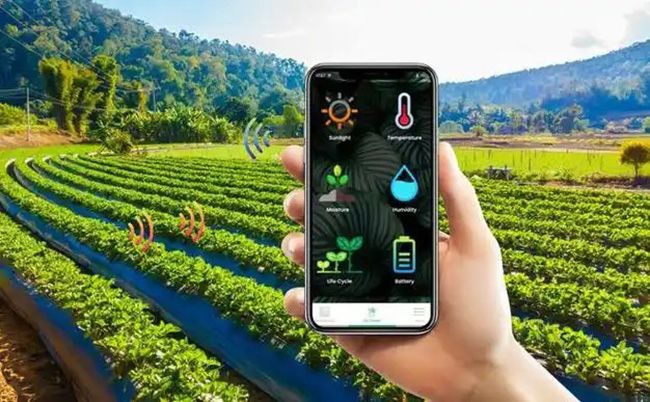
Indoor air quality intelligent control system
In closed spaces such as commercial buildings, schools, hospitals, and airports, air quality directly affects the health and comfort of personnel.
Recommended sensors:
- Air Quality Sensor (CO₂)
- PM Sensor (PM2.5)
- Temperature & Humidity Sensor
- Noise Sensor
| Recommended Sensor | Function description |
| Air Quality Sensor | Monitors indoor CO₂ concentration to reflect ventilation efficiency and occupancy levels |
| PM Sensor | Detects suspended particles like PM2.5 to improve indoor air health index |
| Temperature & Humidity Sensor | Maintains a comfortable environment and links with HVAC and dehumidification systems |
| Noise Sensor | Measures ambient noise levels to enhance indoor comfort and productivity |
Solution suggestion: The sensor is embedded in the HVAC system and the fresh air control module to control the operation of the air valve and fan. The intelligent platform can be connected through the Wi-Fi gateway to realize the automatic response adjustment of air conditioners and air purification equipment, and improve the energy efficiency and user comfort experience.

Smart water management and urban drainage monitoring
Urban drainage systems are prone to waterlogging or flooding in areas prone to heavy rain, aging pipe networks, and low-lying areas. Traditional manual inspection modes have slow responses and insufficient coverage. Building an intelligent drainage monitoring system based on environmental sensors can help to achieve real-time collection and remote management of key parameters such as rainfall, water level, and gas, and improve urban drainage capacity and emergency efficiency.
Recommended sensors:
- Rain Sensor/Rainfall Sensor
- Gas Sensor
- Temperature Sensor
- Humidity Sensor
| Recommended Sensor | Function description |
| Rain Sensor | Monitors rainfall intensity and cumulative precipitation |
| Gas Sensor | Detects harmful gases such as H₂S and CH₄ in underground drainage wells |
| Temperature Sensor | Assesses evaporation potential and supports meteorological analysis |
| Humidity Sensor | Measures ambient humidity to support microclimate modeling |
Solution suggestion: Deploy rainfall, gas, temperature and humidity sensors in areas prone to waterlogging, drainage wells, and underground passages, and realize remote data transmission through NB-IoT or Lora modules. The system can be linked with drainage pumps, gates, etc. to achieve waterlogging warning and automatic drainage control. The sensor needs to have a high protection level (IP66 or above is recommended), good anti-interference ability, support remote maintenance and periodic calibration, and adapt to complex working conditions with high humidity and high corrosion.
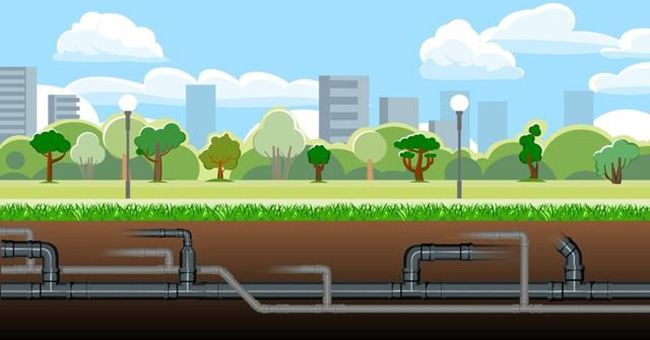
Environmental sensors are driving our understanding of the world into a "real-time, refined, and intelligent" stage. Whether you are building a smart agricultural system, deploying an urban air grid, or developing consumer-grade air quality monitoring equipment, we can provide you with the right sensor products and selection support.
